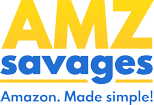If Helium 10 were an actual person, he would embody the stereotypical California surfer dude – backward baseball hat, tank top, throwing up deuces every chance he could, using hip terms like “crush it.” Oh wait… they already have that person.
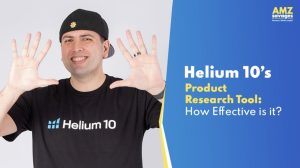
Undoubtedly, if you have been in the Amazon space for even a day, you have heard of Helium 10’a software program and the plethora of tools readily available to help Amazon sellers navigate everything from product research to optimization to inventory management. It essentially is an all-in-one tool that has won the heart of the masses. However, while Helium 10 has some pretty great and effective tools to help leverage your product, it’s questionable how great the software program is for product research.
So you want to start selling on Amazon?
With Amazon’s reputation as a behemoth with the most visited e-commerce store in the world, it’s tempting to wake up one morning and decide that selling on its platform is a sure-fire way to be a successful entrepreneur. After all, there are thousands of rags-to-riches stories about other Amazon merchants winning the pot of gold by setting up shop there.

However, getting neck-deep into Amazon selling takes a lot more than just uploading a product and attaching your product. Whether it be Helium 10 (or the hundreds of other Saas companies out there) these software programs give your product the right visibility, help in inventory management, sales, marketing, and product research that you need to launch, succeed, and scale your business.
How many do I find the right product to sell on Amazon?
But first, you have to find a product worth selling. Maybe you’ve come up with a brand concept that is unique to the marketplace or maybe you want to repurpose a product that already exists. Either option is noble, but you have to understand what works and what doesn’t when it comes to this phase in your journey. As easy as it seems, getting inspiration by surfing Amazon’s website, looking for that next smartphone cover or kitchen utensil that appears to have good reviews and rankings – it’s not that simple. Selling on Amazon requires a lot of heavy-lifting in the beginning when it comes to product research.
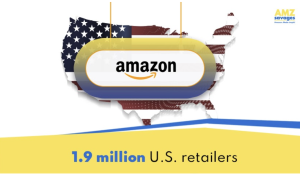
You need to first go into this process with the understanding that Amazon can be pretty cut-throat, with 1.9 million U.S. retailers actively selling on its platform to date. The importance of proper product research cannot be underestimated. While the allure of unlimited visibility on the e-commerce platform is one of its selling points, you need to get in the faces of your potential customers by selling exactly what they need. This means having a firm understanding of supply-and-demand (business 101).
Because of the magnitude of current Amazon sellers, one can’t help but pause for a moment to think about how unlikely it is to find that unique product that doesn’t already involve a lot of sellers already pushing similar merchandise. This is why product research is so important.
More often than not, sellers encounter some challenges when using tools like Helium 10 to conduct product research. Why? Let’s take a look at common issues associated with multiple sellers using the same software to establish a product they think is a “winner.”
Why Helium 10 May Not Be The Best Option For Product Research
High Competition w/ High Sales Velocity
High search volume indicates that a product is in high demand (which is great!) But what many fail to recognize is that, with high search volume, comes high competition. As a seller, your product will compete greatly with other products of its kind. Just from doing a simple keyword check before deciding on a product, you can already see how many similar products are already ranking for those coveted keywords. While a product might be in high demand, you must look at the supply aspect of that. If there are thousands of others supplying a similar product, you will really have to differentiate your product from the others if you want even a chance at succeeding.
In short, sales velocity is how fast you’re making money through online traffic. A number of factors can be responsible for low sales when competing with many sellers on the same product. First, customers tend to go with a seller they are familiar with and have established history with. It is very difficult to compete with a “household name” product.
Another reason is product reviews – the same customers who purchase a product they’re familiar with – will also purchase a product with higher reviews than the three or fours reviews may start with. And even though there’s a tool by Helium 10 that provides reviews of your competitors, all those reviews can do is tell you what works and what doesn’t. This is a good starting point if you want to differentiate your product from your competitors – find out what buyers DIDN’T like about their product and change it.
Going for niche products
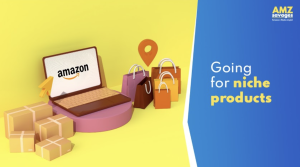
Now, most people utilizing programs like Helium 10 are aware that they, in fact, shouldn’t go after high velocity/highly competitive products for the exact reasons listed above.
So, many will try to find a product that appears to be in decent demand but has far less competition.
And this is, in theory, a great method when deciding what sort of product you want to move forward with.
But here’s the thing: with everyone employing that same method, suddenly that “small niche” product you were so excited about won’t be small anymore. This is why so many people in the industry make jokes about garlic presses. The first few people that sold garlic presses on Amazon made bank because it was a very specific product that offered a very specific solution to a very specific group of people. So, the profit margins were great. But because Helium 10’s product research tool only provides metrics, it doesn’t show you the stark reality that, suddenly, everyone started selling garlic presses based on what originally looked like solid metrics.
To be clear: we’re not suggesting that metrics don’t matter because they certainly do! But think of it this way: say you find a product that has decent search volume but little competition. You do your homework and the profit margins look good. So, you decide that this is your product. Here’s the problem: Helium 10 currently has 1 million subscribers on its platform. What do you think the odds are that a number of those new sellers are looking at the margins of the same product as you and thinking, “this is perfect. I’m going to sell this”? It happens way more than you think.
While numbers are important, product research also involves understanding pain-points
People purchase products for two reasons: needs and wants.
“I need a new blender to make good smoothies.”
“I want that hair curler because it curls hair perfectly.”
Whether out of need or out of want, the ultimate goal of purchasing something is to make one’s life better or easier.
Let’s say for example you were interested in selling a protein powder. Well, there are thousands of protein powders on the market, so you want to make one that differentiates itself from your competitors. But what if you decided it wasn’t the actual ingredients you wanted to differentiate? What if you realized based on reviews and google searches that one of the biggest problems people have with these products is that the scoop never fits inside the bottle or it gets buried deep in the bottle. You could decide to sell a supplement with a unique handle that resolves these pain-points. Patent the handle, not the protein shake. This not only separates you in a very unique way, but potentially you could sell just the handle to other companies that make protein powders. These are the sort of things you need to be considering when formulating a viable Amazon product.
Not calculating your operating costs
The problem with many of the Amazon tools out there is that, when it comes to profitability, they only calculate wholesale costs and the mark-up costs of your competitors. They do not factor in the price of shipping fees, storage fees, FBA fees, marketing costs, PPC costs, launching costs, etc. And this is a BIG DEAL. All of the aforementioned aspects of selling take out a huge amount of your profits, so you need to consider your budget and all of these external costs before deciding if a product is actually viable to make money off of it.
Enter AMZ Savages.
How AMZ Savages works with your budget and all your costs to come up with the perfect product
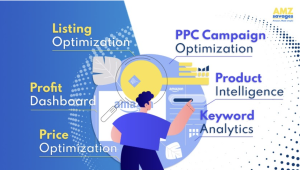
AMZ Savages’s Legendary tool is not like anything else on the current market. We know, we know. Every software company makes these exact claims, and we certainly aren’t suggesting there aren’t great tools out there for a multitude of things Amazon sellers need. However, when it comes to product research, there is one thing all these other companies are doing wrong.
- They don’t work wth your budget
At AMZ Savages, we realize that you have to consider how much money you have to work with in order to decide on a product that makes sense for you to sell. Not knowing your budget is much like house-hunting and looking at everything from condos to mansions. You have to have a financial starting point. - They don’t consider ALL of your overhead
We make a point to calculate your profit margins based on your COGS, landing price, storage fees, FBA fees, marketing costs, photography, listing optimization, PPC, etc. based on aggregated data from the top professionals in all of those fields. - They offer the same products to the same people
Our tool is designed to use your parameters to recommend products ONLY for you. We do not recommend the same product to our clients, so you don’t have to worry about selling a product that someone else on our platform is selling. - The Creators Don’t Have Experience Selling
Our team of experts has spent years in the Amazon space, successfully selling on Amazon. We have spent years perfecting our platform to ensure high quality and high satisfaction. We also have experts on our team to provide 1-on-1 training on how to use the Legendary tool and to answer any questions or concerns you may have.
To learn more about AMZ Savages set-up and how to come up with proper standards when deciding on a product, check out this great read.
